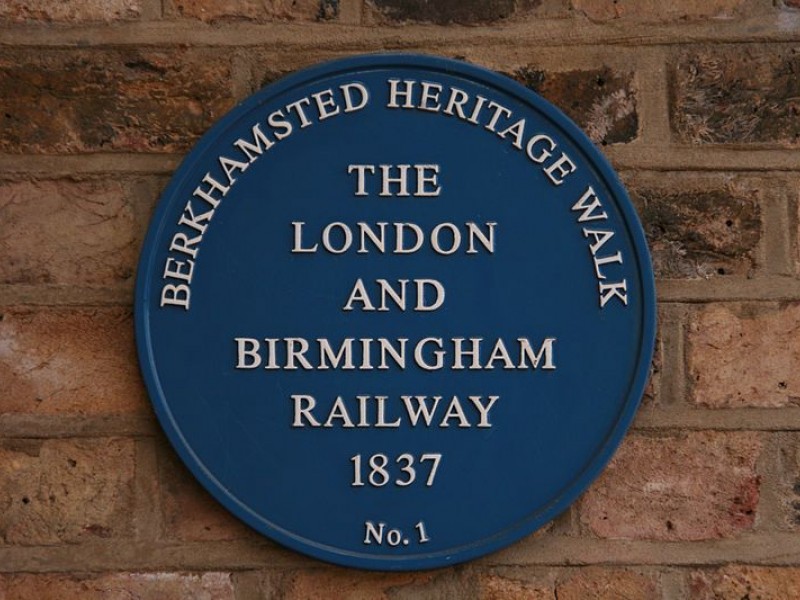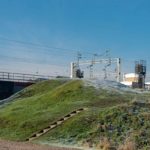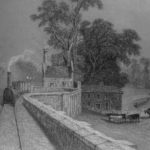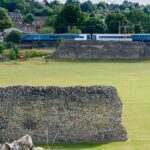In the 1830s, the British landscape was being transformed by the Industrial Revolution. The Grand Junction Canal through Berkhamsted opened in 1805, but only 30 years later its financial success was to be eclipsed by a new transport technology: the railway.
Railway engineer Robert Stephenson opened the London and Birmingham Railway in 1837. Its construction was highly unpopular with the landed gentry and the scheme threatened the business interests of canals, stagecoaches and coaching inns, A protest meeting of angry locals took place at the King’s Arms coaching inn in Berkhamsted, but Stephenson’s railway project went ahead. Local landowners did manage to influence the choice of route, and they had the railway line diverted to to run parallel to the canal, avoiding the country estates of Gadebridge and Ashridge.
The incursion of the railways threatened not only the country estates but also Berkhamsted’s ancient Castle. Local opposition from landowners and the town’s residents brought about the amendment of the proposed Act for a London to Birmingham Railway to provide explicit protection for the majority of Castle site. Sections 98 and 99 of what became the Act for Making a Railway from London to Birmingham on 6th May 1833 set a precise location for the construction — avoiding destruction of the majority of the site (as had originally been proposed) and restricting it to the line of the existing outer embankment to the south — and prohibiting any other digging or construction on or near the Castle.
This concession by the railway company amounted to the first statutory protection of a historic monument anywhere in the world, and was the forerunner of today’s historic monuments protection legislation.
Construction work went ahead and the railway line was built right next to the castle. The protections laid out in the 1833 Act were not enough to save the ruins of the barbican and the southern part of the outer moat, which lay outside the outer embankment. The marsh land around the moat was drained, the barbican ruins were cleared away and navvies built up a large embankment (the lost barbican can be seen in a 1680 painting by Jan Wyck).
The original Berkhamsted station was built on top of the barbican site, near the Castle Street canal bridge. When the railway was widened in 1875, it was replaced with a new station 100m to the west – the building we have today.





